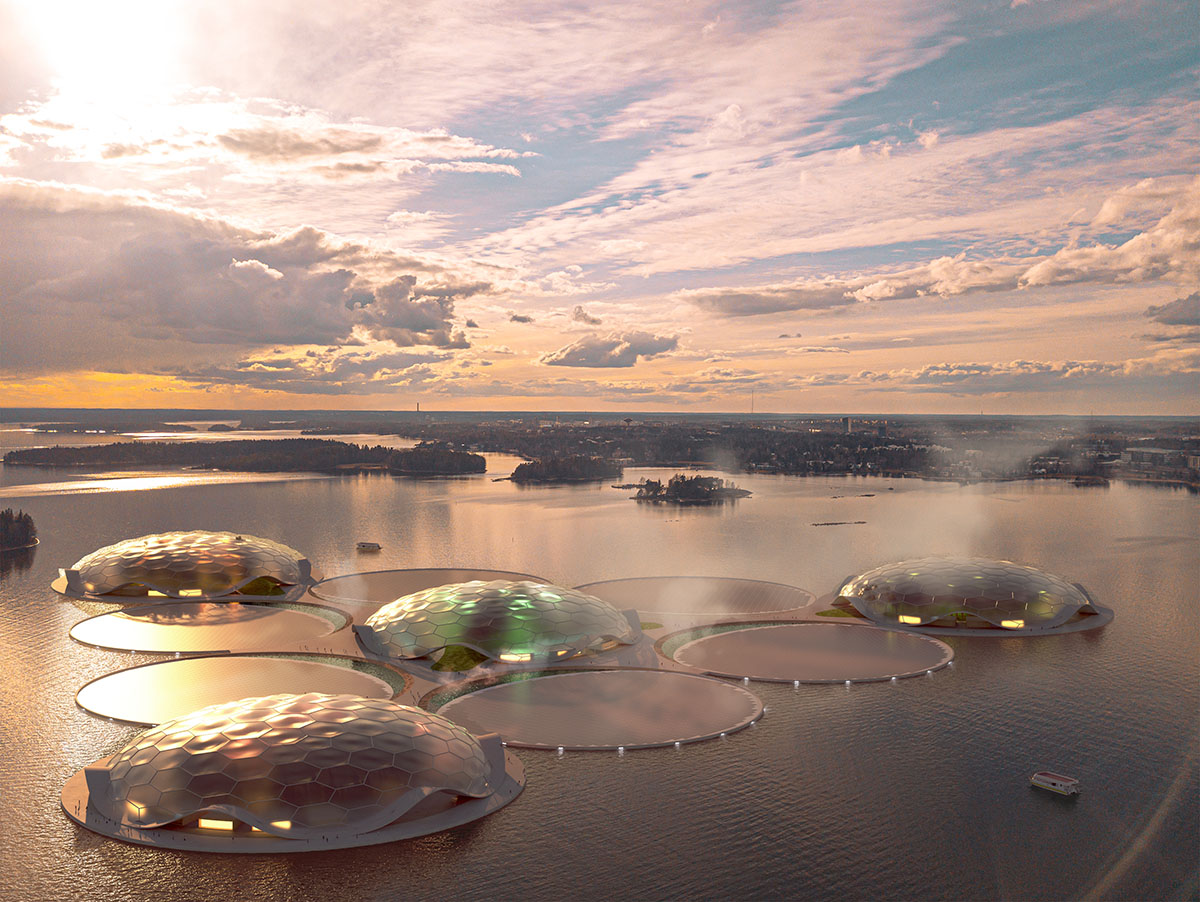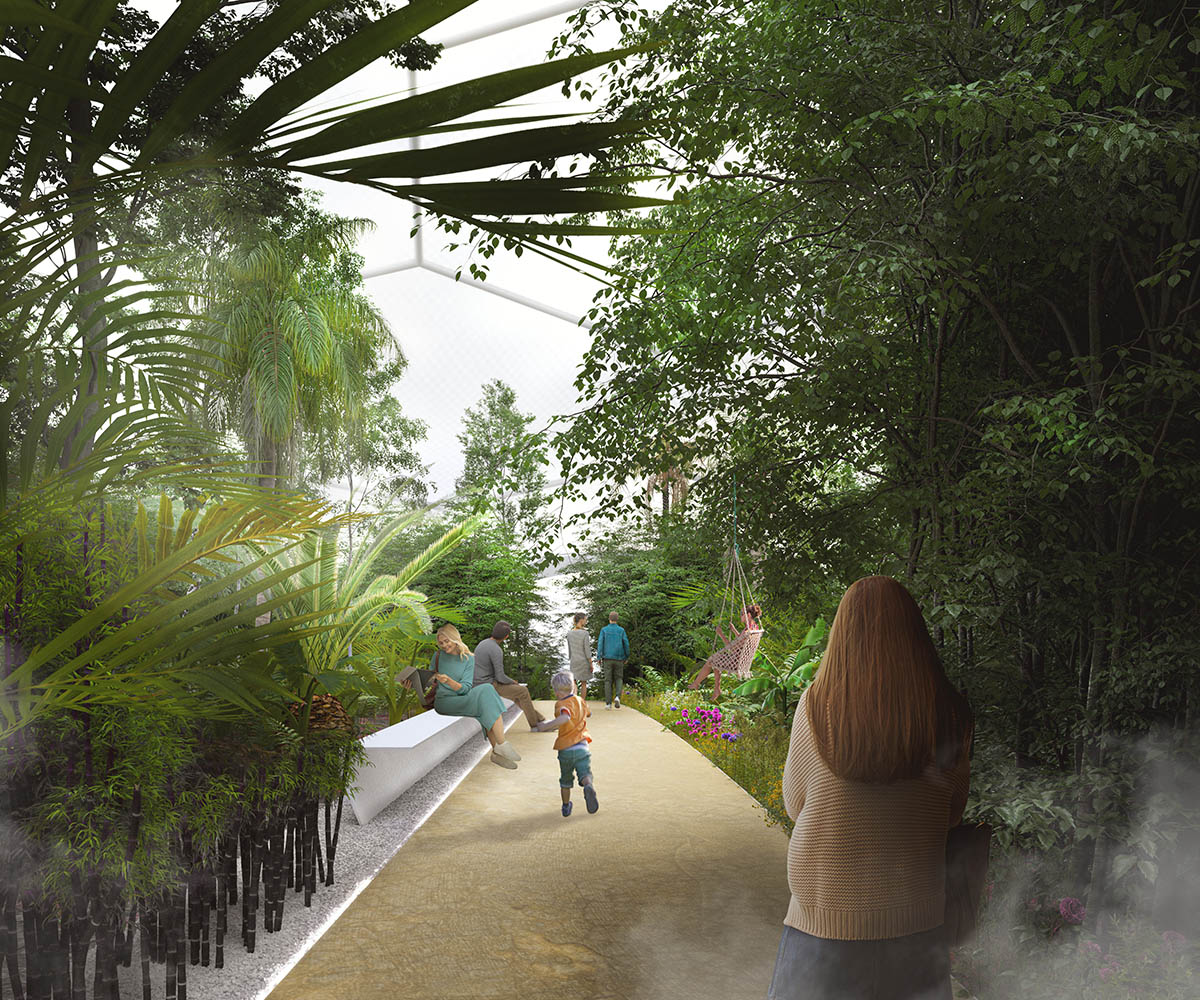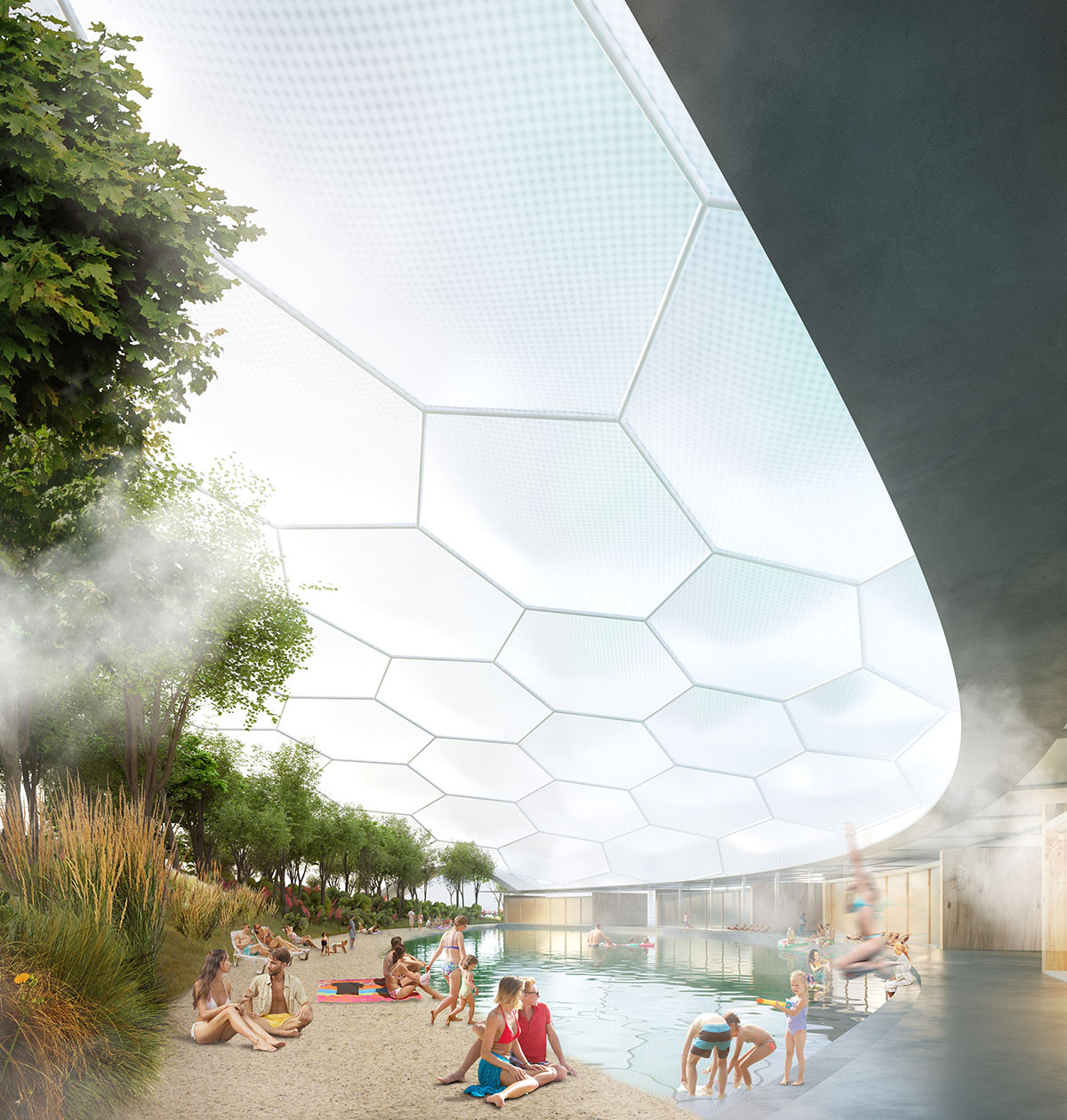Submitted by WA Contents
Carlo Ratti Associati designs "replicable" islands that create a new type of thermal storage
Finland Architecture News - Mar 18, 2021 - 12:59 8239 views

Carlo Ratti Associati with Ramboll, Transsolar, Danfoss Leanheat®, Schneider Electric, OP Financial Group, schlaich bergermann partner and Squint/Opera have won the Helsinki Energy Challenge competition.
A trans-disciplinary team, coordinated by international design and innovation office CRA-Carlo Ratti Associati, has developed a proposal that comprises a series of islands producing "a new type of thermal storage".
Developed as "adaptable" and "replicable" structures that could be implemented to other cities with similar climatic characteristics pursuing sustainable heating solutions, the structures have a dual function of storing thermal energy storage and serving as a hub for recreational activities.
Called Hot Heart, the proposal aims to decarbonize the heating system of the Finnish capital by 2030.
Based on an archipelago of heat-storing basins, the “islands” will be a home to tropical forests and ecosystems from around the world, giving the Finnish capital additional public space and a new educational attraction.
The Hot Heart structures will be located off the coast of Helsinki, Hot Heart will be the largest infrastructural facility of its kind. The project consists of a set of 10 cylindrical basins, each reaching at 225 meters in diameter.
"They collectively can hold up to 10 million cubic meters of water," said Carlo Ratti Associati.
"The system functions like a giant thermal battery: low- or negative-cost renewable energy is converted into heat, stored in the tanks and withdrawn into the city’s heat distribution channels during the winter."

The Hot Heart project was developed as part of the Helsinki Energy Challenge organized by the municipality of Helsinki to accelerate the city’s transition towards carbon-neutrality in heating by 2030.
"The project is also highly adaptable and could be replicated by other cities with similar climatic characteristics pursuing sustainable heating solutions," added the studio.
In addition to its thermal storage properties, the project also doubles as an accessible recreational venue. Four of the 10 hot water reservoirs are enclosed in transparent domes which will form the "Floating Forests" – "tropical ecosystems from the world’s key rainforest zones naturally heated by the basins underneath."
As the team highlighted, the “Floating Forests” will provide visitors with a place to socialize and enjoy the sunlight, even in the harsh Nordic winter, thanks to the use of powerful Sun-like LED Technology."
They will create a unique public space for local residents and provide an attraction to international travelers.
"Production of renewable energy is getting cheaper, but storage is still extremely expensive. Our idea is to use the giant ‘thermal batteries’ to store energy when prices are at low or even negative levels, and extract it when required by the district heating system when demand is high," said Carlo Ratti, founding partner of CRA.

"This model would also be applicable to many coastal cities with similar climates."
"In addition, Hot Heart offers a unique experience, bringing the natural and artificial worlds together. It is inspired by the Finnish concept of Jokamiehen Oikeudet, which could be translated as ‘every person’s right’: the right to reflect and unwind while peacefully enjoying nature."
CRA worked with an international group of consulting and manufacturing firms and energy optimization experts to develop the project’s central concept: using seawater heat pumps to convert wind, solar and other forms of power into heat, which is stored in Hot Heart’s reservoirs.
The whole system will be operated by artificial intelligence and will be synchronized with the production and consumption of thermal energy, which is aimed to help stabilize the national energy grid in relation to fluctuating supply.

As the studio explained, "the whole system is expected to cover the entire heating needs of Helsinki, estimated at 6,000 GWh, by the end of the decade, all without any carbon emissions and at an estimated cost 10% lower than today."
Hot Heart is the latest project to highlight CRA’s vision to improve the urban environment through innovative climate remediation strategies.
Similar projects by the studio include Living Nature, a pavilion at the Milan Design Week 2018 that created climate-controlled gardens corresponding to each of the four seasons.
Developed in conjunction with the Museum of the Future in Dubai, the 2017 installation Sun&Shade was equipped with a set of sunlight-tracking mirrors that reflected excessive light and heat. TheCloud Cast, presented at the UAE Government Summit 2015, employed motion tracking technology to emit clouds of mists above people to achieve a localized cooling effect.
Hot Heart is planned to enter the master planning phase in 2021 and projected to be fully implemented in 2028.
Project facts
Project name: Hot Heart
An international collaboration for the Helsinki Energy Challenge developed by the teams below:
CRA-Carlo Ratti Associati (Design)
Ramboll (General Engineering) – Mika Kovanen, Kreetta Manninen
Transsolar (Climate Engineering) – Monika Schulz, Thomas Auer
Danfoss Leanheat® (Demand Management Engineering) – Oddgeir Gudmundsson, Jukka Aho, Juho Nermes, Lauri Leppä, Nico Klecka
Schneider Electric (Technology Partner for Sustainability and Energy Efficiency) – Jani Vahvanen
OP Financial Group (Financial Analysis)
schlaich bergermann partner (Lightweight Structural Engineering) – Mike Schlaich, Boris Reyher
Squint/Opera (Communications Partner)
CRA team: Carlo Ratti, James Schrader (Project Manager), Alberto Benetti, Federica Busani, Rui Guan, Stephanie Lee, Juan Carlos Romero and Chenyu Xu
All images © CRA graphic team / Gary di Silvio, Pasquale Milieri, Gianluca Zimbardi
Video by Squint/Opera
